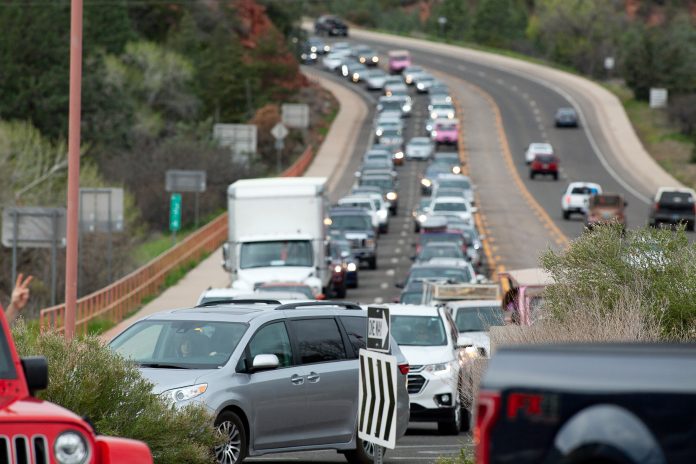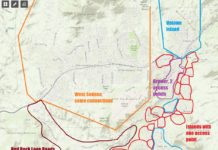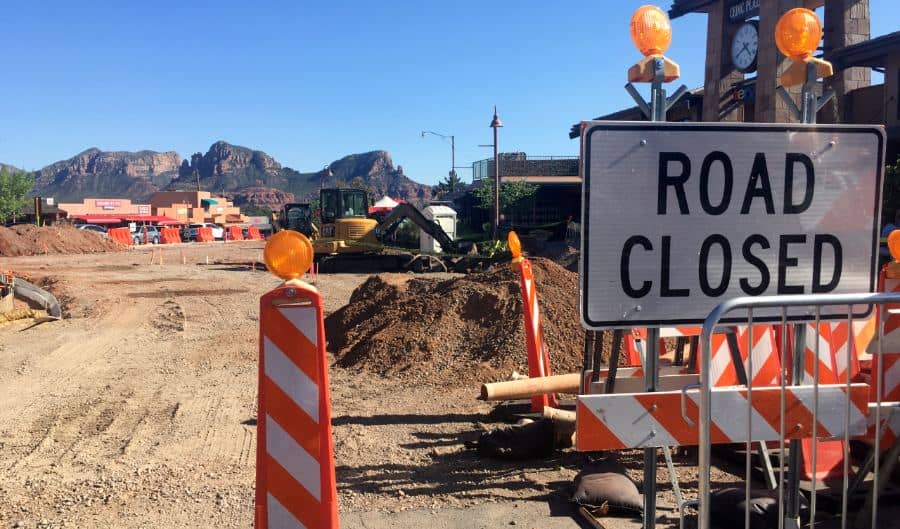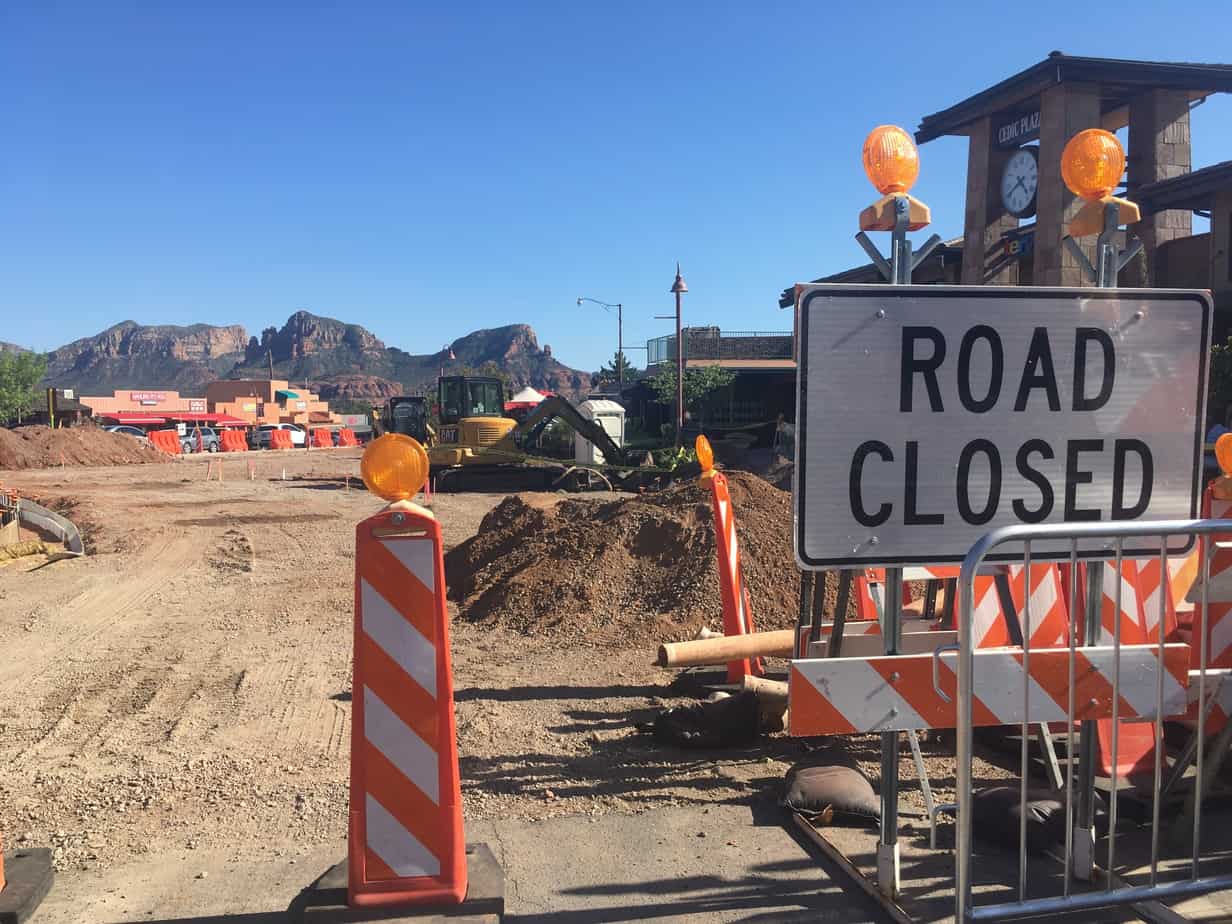A few road improvement projects to consider:
- Coconino County and state officials have announced plans to build a bridge over a steep, narrow canyon at the mouth of Oak Creek Canyon. The relatively short 375-foot long, 24-foot wide bridge will only shorten the current route by 0.5 miles, but county officials said the bridge is a necessary improvement.
Neighbors near the potential bridge at the northernmost end of Sedona within view of the location claim it will ruin the views and the environment but county and local officials say the bridge is a necessary improvement to the canyon road and will take about 10 months to complete, starting Feb. 14 with a completion date of Oct. 31.
- The Arizona Department of Transportation has announced plans to take a existing dirt and gravel road in Oak Creek Canyon, improved from a old wagon trail four years earlier and begin a full paving project. The steep road starts near the mouth of Oak Creek as it enters the northernmost portion of Oak Creek Canyon proper and winds up the steep layers of canyon around several bluffs and cliff faces before reaching the top of the Coconino Plateau, where it connects to a dirt road that heads to Flagstaff. That road was also a former wagon trail that Coconino County and U.S. Forest Service officials agreed to widen and pave to the lip of the canyon.
Paving the series of switchbacks will be a costly and labor-intensive prospect and ADOT officials estimate the entire project will take about four years, but, when completed, Sedona area residents will be able to take the new road directly to Flagstaff.
While many homeowners in Oak Creek Canyon near the new road said they are looking forward to an alternate route out of the canyon in case of wildfire or for medical treatment, other residents said the new road will increase traffic in the canyon and bring more tourists.
Undeterred by the cost and amount of work, county, state and federal officials are planning the road nonetheless.
- Sedona area officials plan on building a new bridge over Oak Creek to connect the right and left banks. ADOT, Coconino County, local and federal officials have identified a location for the new bridge south of the commercial district, on the right bank, and will connect it to a current dirt road on the left bank.
That road will soon be paved and redesignated as a state highway. The USFS has agreed with Yavapai and Coconino county officials to widen and pave that dirt road through forest land to the Big Park area.
While a few neighbors claim the new bridge will bring an increase in traffic, the majority of Sedona area residents said the new bridge is a vital connection that must be built to better unite the community and provide new egress and ingress for Sedona.
I should mention that first project was W.W. Midgley Bridge, built in 1938. It is now an iconic tourist destination in itself, with thousands of tourists every year taking photos of the structure from both the trailhead west of it and from the creekside recreation area 160 feet below.
Midgley Bridge is so integral to the identidy of Sedona that our city’s official logo uses the bridge rising above a silhouette of Cathedral Rock.
The second project was the paving of the State Route 89A, done between 1934 and 1938. The graded dirt road was built in 1930 before ADOT began asphalt paving.
The third was the bridge in the center of the city between Schnebly and Ranger roads by what became Tlaquepaque in the 1970s. That road was later designated as Highway 179, now Arizona State Route 179.
Surely if these “impossible” and “impractical” projects can be built with a mixture of federal, state and county funds, paving Schnebly Hill Road from Sedona to Interstate 17, so Sedona residents have another exit from our city is not as difficult and local officials claim.
If 10,000 cars are going between Sedona from Flagstaff today, they’re all going to use State Route 89A via Oak Creek Canyon. If Schnebly is paved, 5,000 will come down Schnebly and 5,000 down the canyon. The city will not magically have another 10,000 drivers on it, like some residents and officials illogically believe.
If a portion are skipping Uptown to head to the Chapel area or the VOC, they’re not clogging Uptown, reducing congestion there. If they are heading to West Sedona, then, yes, the Y roundabout will still be packed — but only exactly and equally packed as if they all came down the canyon instead.
The “induced demand” theory is a disproved, illusion we covered in an editorial April 3. It’s basic math: There are only 10,000 cars — more don’t appear from thin air nor duplicate like amoeba in a petri dish. City and county officials need to look at Schnebly Hill Road as an other alternative, just as they did with the impossible Midgley Bridge, the impractical canyon switchbacks and the improbable bridge over Oak Creek.
— Christopher Fox Graham
Managing Editor






















